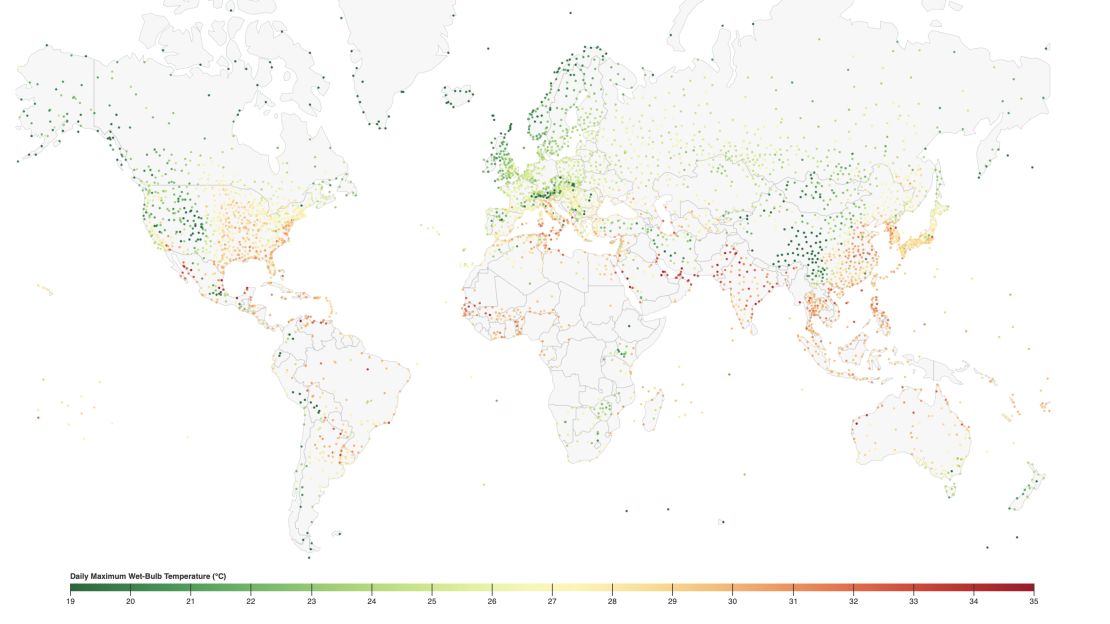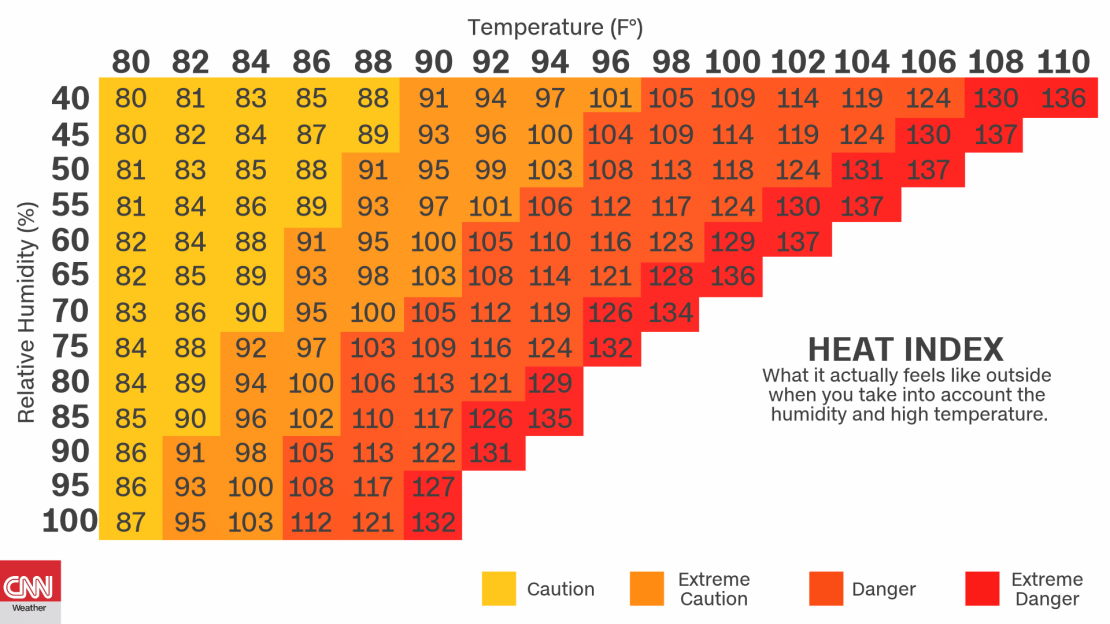Devastating effects of killer “humid-heat” waves are already ravaging the world, contrary to climate studies suggesting these extreme impacts are still decades away.
A new report released Friday by The Earth Institute at Columbia University indicates that the combination of extreme heat and humidity once believed never experienced by humans, is already occurring. This weather mix, often fatal, is surpassing the theoretical threshold of human survivability and will increasingly test our limits well into the future.
Abnormally high temperatures coupled with oppressive humidity has already resulted in massive death tolls. These events are becoming more common and more intense as a result of a warming planet.
“Climate change is increasing both air temperatures and the amount of moisture in the air, making humid heat events more frequent and severe” Radley Horton, a Columbia University research scientist and co-author of this study tells CNN Weather.
What sets this study apart is it looked directly at hourly data captured by nearly 8,000 weather stations, whereas previous studies generally average temperature and humidity over longer durations and larger areas. Since temperature and humidity spikes can occur in only a few hours and in specific locations (like a densely populated neighborhood within a coastal city), previous studies have failed to capture the extreme nature of the heat stress.

The study released an interactive version of this map that can be found here >>>
“I was astonished by our findings,” the author of the study tells CNN Weather. “My previously published study projected that these conditions would not take hold until later in the century.”
“We may be at a closer tipping point than we think,” Horton says.
“Climate change is increasing both air temperatures and the amount of moisture in the air, making humid heat events more frequent and severe.”
Readings have literally been off the charts
Meteorologists use the “wet bulb” temperature which, similar to the heat index, combines heat and humidity to asses discomfort levels.
Outdoor activities are virtually impossible when a wet bulb temperature reaches 32 degrees Celsius – the equivalent of 132 degrees Fahrenheit on the heat index. Anything above 35 degrees Celsius (the theoretical survivability limit) is considered “outside the range of natural variability.”
This is equivalent to a heat index of 160F, which is quite literally off the National Weather Service’s Heat Index charts.

Since 1979 wet bulb readings of 30 degrees Celsius or higher have doubled worldwide, the study reveals, with readings across the Persian Gulf topping the potentially lethal 35 degrees Celsius limit.
Coastal cities are more vulnerable to the effects of heat stress because of their proximity to evaporating sea water. If you live along the Gulf Coast of the US, you are well aware that the combination of heat and humidity can make even the simplest outdoor tasks unbearable.
The study found that New Orleans and Biloxi, Mississippi have experienced extreme conditions dozens of times along with their neighbors in the Florida Panhandle and into eastern Texas.
Inland locations can also be hotbeds for heat stress even though they are not on the immediate coastline. Horton tells CNN Weather that “extreme water temperatures can prime the pump for deadly humid heat events in nearby land areas.” Local winds can transport this moisture-rich air inland, similar to what is experienced throughout India’s low-lying river deltas during the season monsoon.
Too hot to handle
Our bodies cool ourselves by sweating, but if the humidity is high, this process becomes less effective. We then instinctively seek out shade or air conditioned buildings.
It’s not that easy elsewhere, according to Ryan Maue, a research meteorologist in the private sector who is not part of the group of researchers responsible for the study.
“This is not a problem for the end of the century, but in the present, especially in the developing world without widespread air conditioning,” Maue says.
Many people in poorer countries struggle to receive reliable electricity, let alone air conditioning for their homes.
The most vulnerable locations identified within this latest report include southern Asia, subtropical Africa, the Caribbean, northwest Australia, coastal southwest North America and the Persian Gulf.
See more of CNN's Earth Day and climate crisis coverage
• Follow @CNNclimate on Instagram• Get the latest climate news and in-depth features• Read these editor’s picks
According to their research, the highest heat and humidity readings were recorded 14 times throughout Persian Gulf cities, including Doha, Qatar, which will host the FIFA World Cup in 2022. Event organizers were forced to move the tournament to the cooler months of November and December to blunt the effects of the brutal heat experienced during typical World Cup months of play.
This study is one of several recent studies reaching similar conclusions; global warming will soon reach levels that make human survival difficult if not impossible.
If our planet continues to warm at current levels for the next 50 years, up to 3 billion people could be living in areas too hot for humans.





